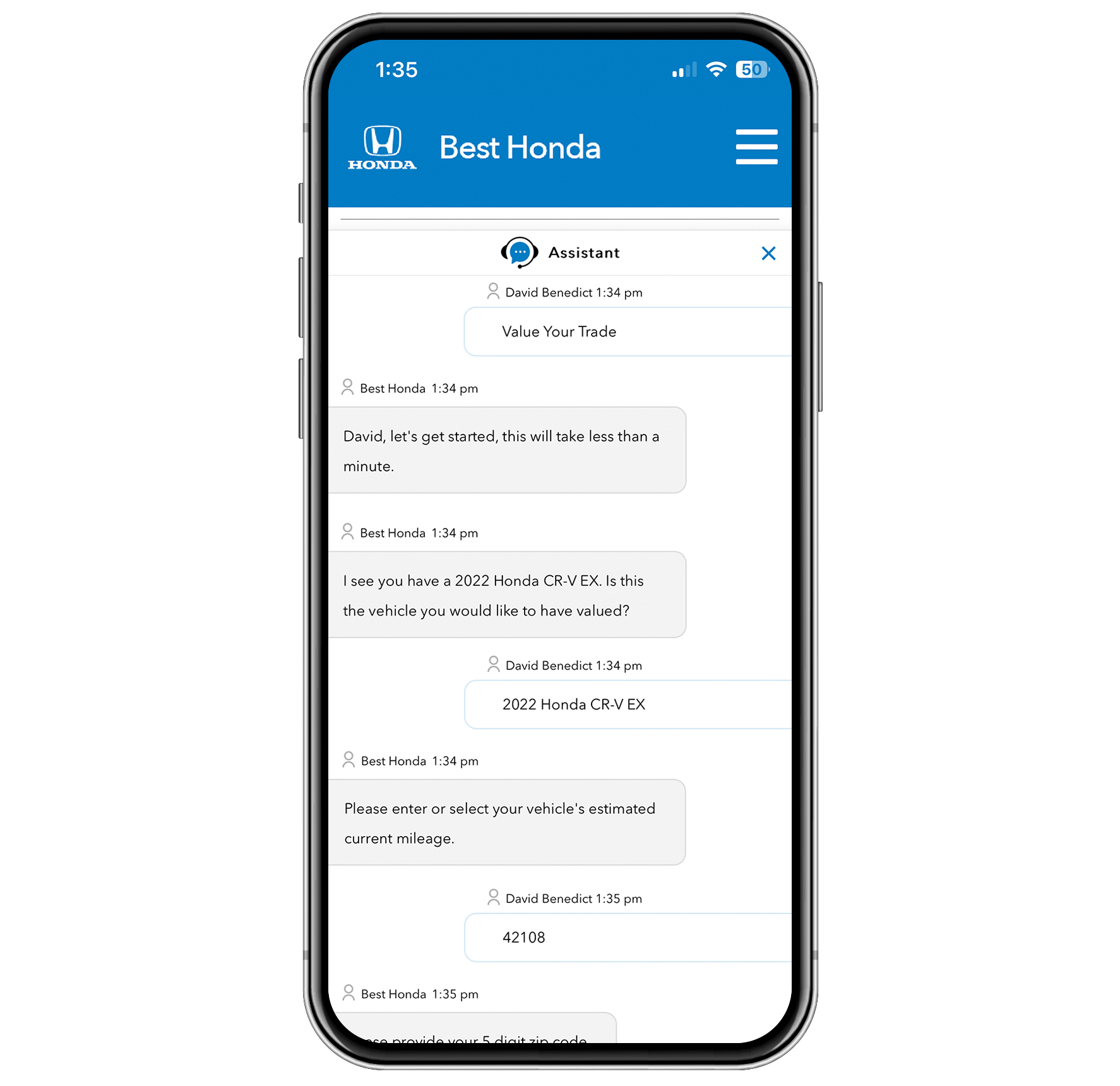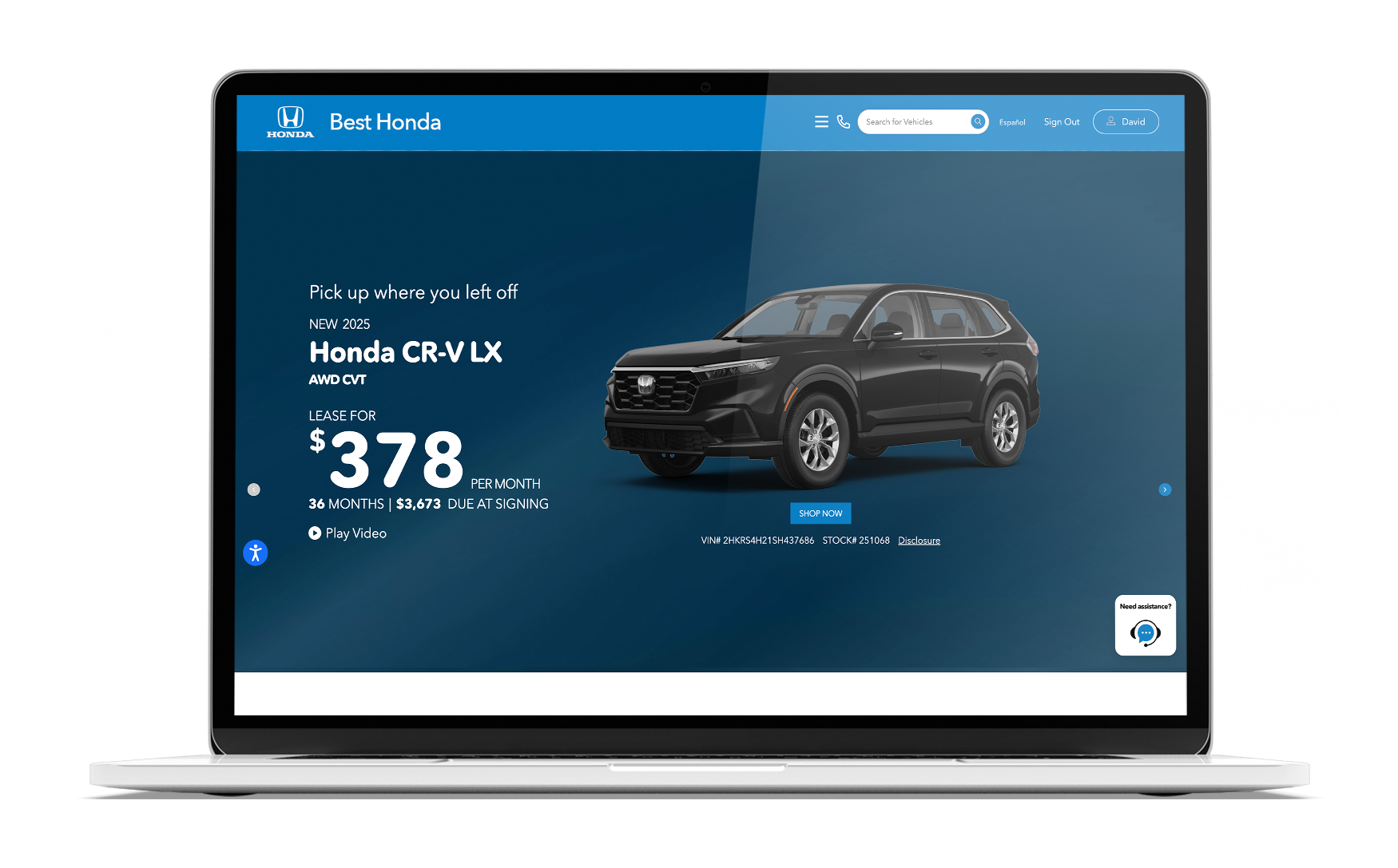Click. Buy. Drive. The Hybrid Car Buying Experience Customers Want in 2025
By: David Boice • Photos by: Adobe

Consumers are calling the shots when it comes to buying cars, and they’re choosing options that put control and the freedom to explore, compare, and finance vehicles in their hands. Remote car buying gives them exactly that freedom— all from the comfort of home.
For dealers, adapting to this consumer trend means staying competitive and up-to-date with the latest innovations in automotive technology.
Connecting Digital and Physical Touchpoints
According to Bloomreach, 9 out of 10 consumers want an omnichannel retail experience with seamless service between communication methods. This is no different in the auto industry—car buyers expect a smooth transition between online and in-person interactions, where the convenience of browsing inventory and securing financing online complements the traditional option of in-store consultations. Dealerships that blend these touchpoints offer a streamlined experience that respects both the buyer’s time and desire for control.
For example, a customer browsing a dealership’s website might find their vehicle, schedule a test drive, pre-qualify for a loan, and complete some pre-sale paperwork. With all of this taken care of online, consumers can visit the dealership to examine the car in person and iron out the final details with a salesperson before signing the dotted line.
This hybrid model, from being just an optional, nice-to-have initiative, has quickly become the standard that customers expect.
Personalizing the Buying Experience with Customer Data
Data is a goldmine in understanding what customers want, with 73 percent of consumers preferring brands that use personal information to make their shopping experiences more relevant. When new customers browse a dealership’s website, each click, search, and saved model provides valuable insights into their preferences. When they’ve made a previous purchase, there is data related to their trade value, equity, and pay-off options.
Dealers can leverage this data to deliver an intelligently personalized experience from the start, phasing out generic sales campaigns in favor of dynamically tailored recommendations.
Imagine a previous customer shopping online to upgrade to a new SUV in a certain price range. They view a few different models that are available on the lot but ultimately decide to hold off for now and close out of the dealer’s website. This customer could automatically receive targeted campaigns featuring the same or similar models that fit their budget, including a compelling offer that takes their current equity and trade value into account.
This personalized approach, informed by their own browsing data and current vehicle status, feels relevant and makes the shopping process more impactful, intentional, and efficient.
Navigating the Need for an Integrated Digital Dealership
Transitioning to a remote-friendly setup involves more than padding your digital toolkit. From a dealer’s perspective, it’s a significant shift that impacts nearly every part of both day-to-day and long-term operations.
Adopting digital tools takes time, effort, and careful evaluation as dealerships select the best technologies for their business, manage costs, and ensure smooth integration with existing systems. With 90 percent of customers expecting consistent interactions across channels, truly seamless integration is a critical component of every dealer’s tech stack.
A lack of integration makes it impossible for dealers to deliver consistent offers and payment options on their vehicle of interest, immediately creating confusion and distrust. When CRM, website, digital advertising, email marketing, and financing tools (to name a few) don’t talk to each other, customers experience friction and frustration – and only 10 percent of disappointed consumers are likely to return to the same dealership.
Synergy Needed for Personalized Customer Experience
Having synergy across a dealership’s toolkit is essential to delivering a connected and personalized customer experience. Not only do customers receive the same offers and messaging at each touchpoint, but they also have an overall personalized relationship with the dealership throughout their ownership experience.
Successful integration extends beyond the initial purchase of a car but creates lifetime customer value by being able to provide regular recommendations based on the vehicle’s needs, like service reminders, upgrade and lease renewal options, and more.
With a truly integrated tech stack, dealers can gain a detailed view of the entire shopping journey, gaining insight into each customer’s path to purchase. Having visibility into the different engagements, touchpoints, and browsing activity allows dealers to analyze and predict those most likely to complete a transaction while delivering personalized messaging at just the right time.
An Experience That Meets Modern Buyer Expectations
As car buyers continue to seek control and comfort in the purchasing process, dealerships have a clear opportunity to meet these evolving expectations through a hybrid approach that combines digital convenience with in-person support. Integrating technology not only personalizes the shopping experience from start to finish but eliminates friction, ensuring customers can move seamlessly between online interactions and showroom visits without missing a beat.
Dealers who embrace these innovations are well-positioned to build meaningful, lasting relationships with their customers and nurture lasting loyalty. By blending remote and in-person experiences and prioritizing seamless, data-driven interactions, dealerships are not only staying competitive – they’re setting a new standard for the future of car buying.
Source: Digital Dealer

























































